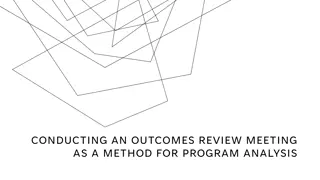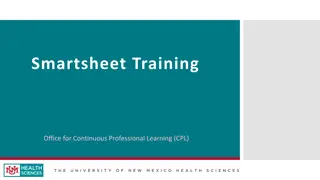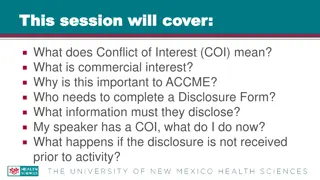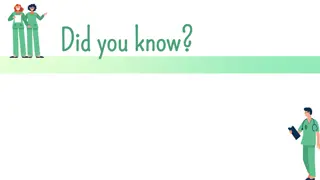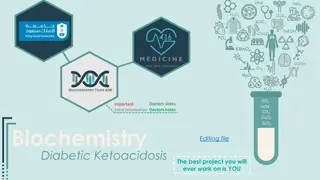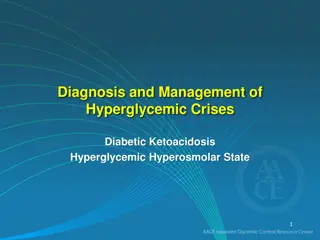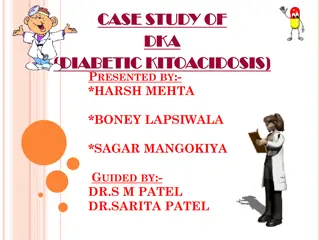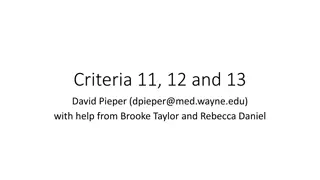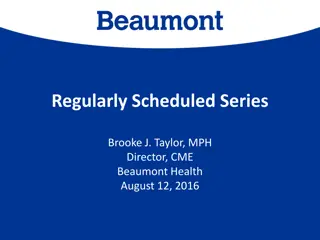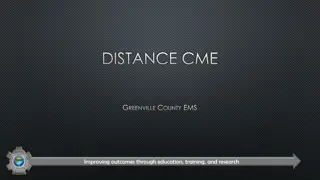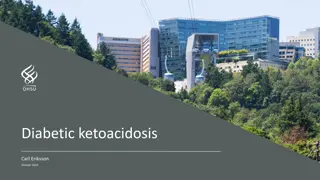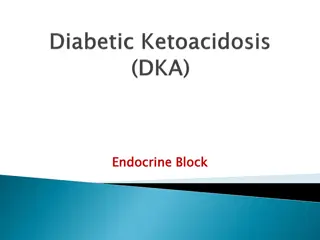
Thrombosis and Diabetic Emergency Management at Kacheliba Sub-County Hospital
Learn about thrombosis, risk factors, symptoms, and treatment in the context of available resources at Kacheliba Sub-County Hospital. Understand diabetic emergencies and management strategies for staff from various professions. Explore the specifics of thrombosis, DVT, PE, and diabetic conditions, including symptoms, diagnosis, and treatment options with the limitations of resources in mind.
Download Presentation

Please find below an Image/Link to download the presentation.
The content on the website is provided AS IS for your information and personal use only. It may not be sold, licensed, or shared on other websites without obtaining consent from the author. If you encounter any issues during the download, it is possible that the publisher has removed the file from their server.
You are allowed to download the files provided on this website for personal or commercial use, subject to the condition that they are used lawfully. All files are the property of their respective owners.
The content on the website is provided AS IS for your information and personal use only. It may not be sold, licensed, or shared on other websites without obtaining consent from the author.
E N D
Presentation Transcript
EDIT This presentation about thrombosis and the diabetic emergency was adapted for the resources available at Kacheliba Sub-County Hospital and prepared for staff from all professions. For example, it is not possible to measure S-potassium or blood gases at the hospital nor is addex-potassium available, the only i.v fluids with potassium is Ringer-Lactate.
CME on Thrombosis and DKA/HNKS Dr Siri Maartensson Kacheliba Sub-County Hospital 19/09/2023
Thrombosis Thrombosis
What is a thrombosis? Blood clot in artery or vein DVT deep venous thrombosis, usually leg PE pulmonary embolism AMI acute myocardial infartion/heart attack Stroke Clot that broke loose and moved embolus
Risc factors for thrombosis Cancer Immobilization, i.e post-op Surgery both trauma and immobilized. E.g c-section! Pregnancy Fractures (vessel damage and immobilized) Obesity. Smoking. Inherited pro-coagulant disorders Medications (i.e certain birth control pills)
Deep venous thrombosis Symtoms - swollen, painful extremity (side difference measure!) Diagnosis - ultrasound if available. Refer! Pre-referral heparin? Treatment anticoagulant medication Heparin, low molecular weight heparin, warfarin, new oral anticoagulants. 3 months for uncomplicated DVT below the knee 6 months for more proximal DVT Risks clot breaks off (embolus) pulmonary embolism or stroke
Pulmonary embolism Symtoms Difficulty breathing (dyspnea), chestpain when breathing (pleuritis) Low SaO2 Takycardia Signs of DVT in extremity. Risk factors? Diagnosis Lab D-dimer in certain conditions Computer tomography or scint Treatment 6 months if known cause Otherwise lifelong treatment
The The acute acute diabetic DKA, HHNS DKA, HHNS diabetic patient patient
Diabetes Mellitus - summary Type 1 diabetes Autoimmune disease of pancreas Debute childhood/young adults Absolute, lifelong insulin need! Smt: weightloss, polydipsia and polyuria, GBW, blurry vision. No insulin DKA! Lethal! Chronic complications if not well controlled (ie eyes, kidneys, neuro, feet, blood vessels) Type 2 diabetes Gradually increased insulin resistency Debute adulthood Initial oral treatment, possible insulin requirement Untreated risk of HHNS! Chronic complications if not well controlled!
DKA DKA diabetes diabetes ketoacidosis ketoacidosis HHNS HHNS hyperosmolar hyperosmolar hyperglycemic nonketotic nonketotic syndrome hyperglycemic syndrome
DKA diabetic ketoacidocis Mostly type 1, also seen in type 2. Triggers: Newly dx DM1. Stopped insulin treatment, suboptimal storage of insulin (no fridge). Infection. Severe burns. Alcohol abuse. Corticosteroids. Trauma. Surgery. Insulin deficiency no glucose uptake in cells ketone production, high blood sugar, acidosis. Polyuria, polydipsia, vomiting, abd pain, GBW, takypnoic, headache, fruity breath (ketoacidosis). U/A glucose and ketones +++. RBS HHH. Acidosis.
HHNS - hyperosmolar hyperosmolar hyperglycemic hyperglycemic nonketotic nonketotic syndrome syndrome Type 2 diabetes. Triggers: Stopped diabetic treatment. Infection. Same as DKA. Polydipsia, polyuria, GBW, confusion, weight loss, nausea. RBS HHH. U/A glucose +++, no/few ketones. Severly dehydrated.
Treatment FLUIDS! Immediately! A lot! Insulin Potassium will always K+ when initiating treatment. However, Addex-K+ not available at KSCH. Some differences: HHNS start fluids before insulin, otherwise risk of chock as glucose enters cells (glucose upholds osmotic pressure and keeps fluid in blood vessels). Higher total insulin need in DKA. Infection? Antibiotics?
Fluids in the adult! Severly dehydrated! Hour 1: 1000 ml of NS Hour 2-3: approx. 2000 ml of RL (i.e 1000 ml/hour) Following hours: 250 ml RL/hour. Important to change to RL! Not only NS! Glucose level decreases potassium (K+) enter the cells low serum potassium (risk of arrythmia, paralysis, respiratory distress). Ideally add extra K+ to iv fluids. When RBS<15 change to dextrose.
Insulin Start with soluble insulin (fast acting). IV: Ideally 0,1 IU/kg/hour infusion (in NS or RL), but lower doseif not able to monitor closely! Or IM: Bolus 0,3 IU/kg (half iv, half im). Then every hour repeat soluble IM 0,1 IU/kg. Deltoid or gluteal muscle. Check RBS often, ideally every hour. Goal to lower RBS maximum 4 mmol/h. When stabilized change to Mixtard, titrate. Re-check U/A for ketones.

